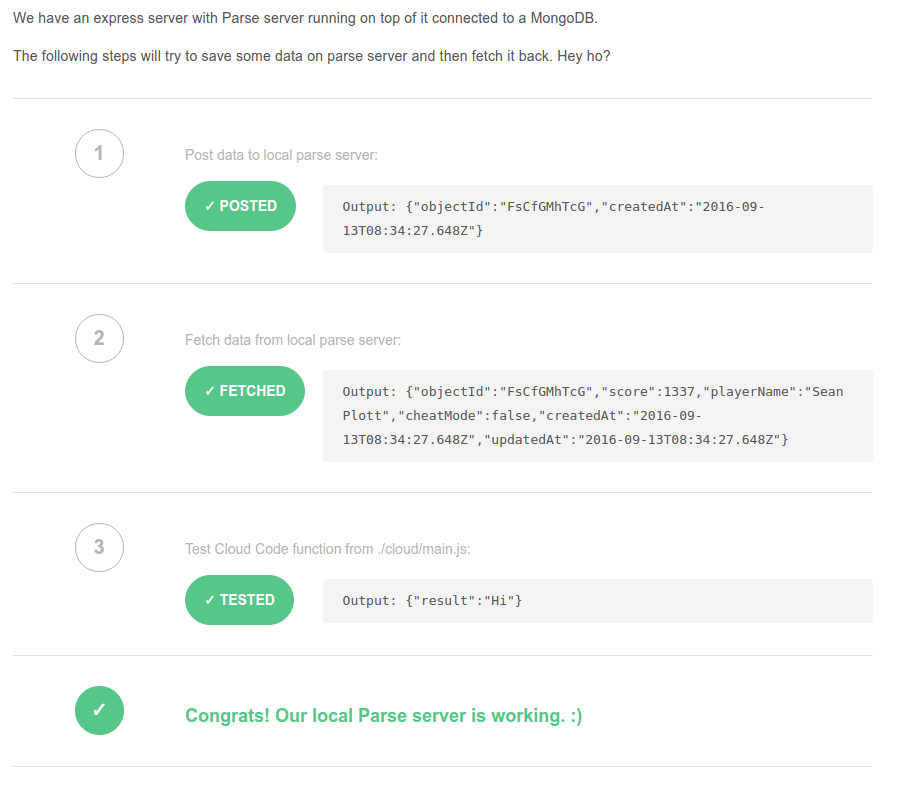A few months have passed since the retirement announcement of Parse dedicated service. If you are unfamiliar with Parse, it was a Mobile Backend as a Service which allowed you to run your backend API seamlessly and hosted in the cloud. The good news is that the replacement open source version, Parse Server, is becoming increasingly popular. Parse Server can be self-hosted on an infrastructure running Node.js and is powered by the Express web application framework.
Today, I am happy to announce the availability of a Parse Server quickstart for OpenShift Online (Next Gen). Follow along and you'll be hosting your Parse Server instance in less than 5 minutes!
Getting Started With OpenShift Online (Next Gen)
If you still don't have an account on OpenShift Online (Next Gen), then follow these easy steps:
- Register for a free OpenShift Online (Next Gen) account
- Create a project in the OpenShift Online Console.
- Install the OpenShift CLI.
Creating a Parse Server Project
To create a Parse Server project on your account, firstly add the Parse Server default template to your project:
$ oc create -f https://raw.githubusercontent.com/ParsePlatform/parse-server-example/master/openshift.json
Then, deploy Parse Server from the web console just like you would with any other app:
- Open your project in the OpenShift Online Console
- Click Add to Project from the top navigation
- Scroll down (or search) and select NodeJS > Parse Server

-
(Optionally) Update the Parse Server settings (parameters), such as git repository URL

-
Click Create
And that's it, after your application is built and deployed you should be able to test under a default /test route!
If you'd like to find out more about about Parse Server, be sure to check the official GitHub repository and the Parse Platform Documentation.
Note: If you are a shell fan, you can simply create a new Parse Server project by specifying the template file directly:
$ oc new-app -f https://raw.githubusercontent.com/ParsePlatform/parse-server-example/master/openshift.json
If you are looking for an enterprise solution which runs natively on OpenShift (Next Gen), go ahead and try Red Hat Mobile Application Platform.
執筆者紹介
チャンネル別に見る
自動化
テクノロジー、チームおよび環境に関する IT 自動化の最新情報
AI (人工知能)
お客様が AI ワークロードをどこでも自由に実行することを可能にするプラットフォームについてのアップデート
オープン・ハイブリッドクラウド
ハイブリッドクラウドで柔軟に未来を築く方法をご確認ください。
セキュリティ
環境やテクノロジー全体に及ぶリスクを軽減する方法に関する最新情報
エッジコンピューティング
エッジでの運用を単純化するプラットフォームのアップデート
インフラストラクチャ
世界有数のエンタープライズ向け Linux プラットフォームの最新情報
アプリケーション
アプリケーションの最も困難な課題に対する Red Hat ソリューションの詳細
オリジナル番組
エンタープライズ向けテクノロジーのメーカーやリーダーによるストーリー
製品
ツール
試用、購入、販売
コミュニケーション
Red Hat について
エンタープライズ・オープンソース・ソリューションのプロバイダーとして世界をリードする Red Hat は、Linux、クラウド、コンテナ、Kubernetes などのテクノロジーを提供しています。Red Hat は強化されたソリューションを提供し、コアデータセンターからネットワークエッジまで、企業が複数のプラットフォームおよび環境間で容易に運用できるようにしています。
言語を選択してください
Red Hat legal and privacy links
- Red Hat について
- 採用情報
- イベント
- 各国のオフィス
- Red Hat へのお問い合わせ
- Red Hat ブログ
- ダイバーシティ、エクイティ、およびインクルージョン
- Cool Stuff Store
- Red Hat Summit


